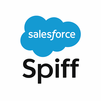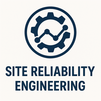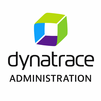.jpg)
This ForgeRock Access Management (AM) course provides in-depth training on securing and managing digital identities across complex environments. Explore core concepts like authentication modules, Authorization policies, SSO, Federation (SAML, OIDC), and Adaptive Risk Authentication. Through hands-on labs and real-world scenarios, you'll learn how to configure AM for high availability, integrate OAuth 2.0, and implement secure authentication journeys. Build expertise to deploy scalable, secure access management solutions effectively.
ForgeRock Access Management (AM) Training Interview Questions Answers - For Intermediate
1. What is an Identity Provider (IdP) and Service Provider (SP) in Federation?
In a federated identity system, the Identity Provider (IdP) is responsible for authenticating users and asserting their identity to other parties. The Service Provider (SP) relies on the IdP’s assertion to grant access to resources. ForgeRock AM can play both roles, enabling secure single sign-on (SSO) across different organizations or applications by using SAML 2.0 or OpenID Connect protocols.
2. What is OpenID Connect (OIDC) and how is it supported in ForgeRock AM?
OpenID Connect (OIDC) is an authentication protocol based on OAuth 2.0 that lets clients verify the identity of end-users. ForgeRock AM fully supports OIDC, acting as an OpenID Provider (OP) to issue ID tokens and access tokens to client applications, enabling federated authentication across web and mobile apps.
3. How does ForgeRock AM handle social login integration?
ForgeRock AM enables social login by configuring it as an authentication module or node within authentication trees. Users can authenticate through providers like Google, Facebook, or LinkedIn via OAuth 2.0/OIDC. Administrators configure client credentials and endpoints for these providers within AM to offer seamless social sign-on experiences.
4. What is Adaptive Risk Authentication in ForgeRock AM?
Adaptive Risk Authentication adjusts authentication requirements based on real-time risk analysis. For example, if a user attempts login from an unusual location or unrecognized device, ForgeRock AM can prompt additional authentication steps. It uses contextual data and risk scoring models to make authentication decisions smarter and more secure.
5. What is the purpose of SAML Assertions in ForgeRock AM?
A SAML Assertion is a security token containing statements about a user, issued by the IdP during SAML SSO processes. ForgeRock AM uses SAML Assertions to convey authentication, attribute, or authorization information to the Service Provider, enabling trust between different security domains.
6. What are Adaptive Authentication Trees?
Authentication Trees in ForgeRock AM allow administrators to create dynamic authentication journeys. Using nodes and branches, Trees adapt to real-time decisions like device trust, location, or behavioral analytics. This enables more flexible, intelligent authentication paths compared to static chains.
7. How can ForgeRock AM ensure High Availability?
High Availability (HA) in ForgeRock AM is achieved by deploying multiple AM servers behind a load balancer, using a replicated data store for configuration and session data. Session failover ensures users don't lose active sessions if a node fails, providing resilience and minimal downtime.
8. What is CTS (Core Token Service) in ForgeRock AM?
Core Token Service (CTS) manages persistent tokens and sessions in ForgeRock AM. It stores authentication sessions, OAuth2 tokens, and other artifacts in a centralized data store (often an LDAP directory). CTS enables session failover, token validation, and enhances scalability in distributed environments.
9. What is the difference between Persistent Cookies and Session Cookies in AM?
Session Cookies expire when the browser is closed or the session times out, while Persistent Cookies remain on the device until they expire or are explicitly deleted. In ForgeRock AM, persistent cookies are used for features like "Remember Me" functionality, enabling users to remain logged in across sessions.
10. How are Authorization Policies configured in ForgeRock AM?
Authorization Policies in ForgeRock AM define what resources users can access under which conditions. They consist of rules based on user attributes, resource types, environment variables (e.g., IP address, time), and required entitlements. Policies are managed using the Policy Administration UI or APIs and evaluated during access requests.
11. What are Client-Based Sessions in ForgeRock AM?
Client-Based Sessions store session information on the client side (browser or mobile app) instead of on the server. ForgeRock AM signs and encrypts session tokens to maintain integrity and confidentiality. This model reduces server load and improves scalability, particularly for large, distributed environments.
12. Explain Step-Up Authentication with an example.
Step-Up Authentication involves requiring additional authentication when accessing higher-risk resources. For example, a user logging into a basic dashboard with a password might be prompted for OTP verification when trying to access financial data. ForgeRock AM supports step-up authentication using authentication trees and policies based on contextual triggers.
13. How do Identity Gateway (IG) and AM work together?
ForgeRock Identity Gateway (IG) is a reverse proxy that works with AM to extend authentication, authorization, and identity-based access control to legacy or non-standard applications. IG intercepts user requests, redirects them to AM for authentication, and applies policies before forwarding traffic to backend applications.
14. What is UMA (User-Managed Access) and how does AM support it?
User-Managed Access (UMA) is an OAuth 2.0-based protocol that enables users to control who can access their data and under what conditions. ForgeRock AM acts as a UMA Authorization Server, allowing users to manage consent and policies for resources they own, improving data privacy and user control.
15. How are Session Properties used in AM?
Session Properties are metadata associated with user sessions, such as login time, IP address, authentication level, and custom attributes. They can be used in policy evaluations, adaptive authentication, and risk analysis. Administrators can define or capture additional session properties based on business needs.
ForgeRock Access Management (AM) Training Interview Questions Answers - For Advanced
1. How does ForgeRock AM support Delegated Administration?
ForgeRock AM supports delegated administration by allowing administrators to assign specific permissions to delegated users without granting them full administrative access. Delegated administrators can be configured to manage certain realms, groups, or policies. Role-based access control (RBAC) and fine-grained authorization policies are used to restrict what delegated administrators can see and do. By using administrative authorization policies, AM ensures that different business units or partners can manage their own users and resources without compromising overall system security, thereby achieving decentralized but controlled management across the enterprise.
2. What are Decision Nodes in Authentication Trees and how do they enhance flexibility?
Decision Nodes in ForgeRock AM Authentication Trees introduce logic into authentication flows. Unlike simple authentication modules that just verify credentials, decision nodes evaluate conditions (e.g., checking a device profile, geolocation, time of access) and dynamically route the authentication journey based on real-time data. For example, if a login is from a new device, the tree can branch into a higher-assurance authentication step like sending an OTP. Decision nodes thus enable adaptive, context-driven authentication experiences, ensuring better security without creating unnecessary friction for trusted or low-risk access scenarios.
3. What is the role of Scripting Nodes in ForgeRock AM Authentication Trees?
Scripting Nodes in Authentication Trees allow administrators to embed custom business logic into authentication flows. Written in JavaScript or Groovy, these scripts can perform dynamic operations such as calling external APIs, fetching additional user attributes, or applying customized authentication logic. For example, a script can query a fraud detection service before deciding whether to permit or deny access. Scripting nodes provide unmatched flexibility but must be used cautiously, ensuring scripts are optimized for performance and security to avoid delays or vulnerabilities during the authentication process.
4. How does ForgeRock AM integrate with external Authorization Services?
ForgeRock AM can integrate with external Authorization Services using APIs and standards like XACML (eXtensible Access Control Markup Language) or custom REST endpoints. In a decoupled model, AM acts as the Policy Enforcement Point (PEP), forwarding access requests to an external Policy Decision Point (PDP) and enforcing the decisions. This enables organizations to leverage centralized policy engines or third-party compliance systems while maintaining uniform access control. Proper integration involves securing API communications, translating AM session attributes into authorization queries, and mapping the external service’s decisions back into AM’s enforcement actions.
5. Explain how ForgeRock AM handles OAuth 2.0 Dynamic Client Registration.
OAuth 2.0 Dynamic Client Registration allows clients to programmatically register with an Authorization Server (ForgeRock AM) without manual intervention. In AM, this is supported by enabling the dynamic registration endpoint, where client applications submit metadata (redirect URIs, scopes, client names) and receive a client ID and secret automatically. Dynamic registration is essential for supporting large ecosystems like API marketplaces. Security considerations include setting up protected registration endpoints, validating incoming metadata, and defining trusted policies for registered clients to prevent abuse or fraudulent client registrations.
6. How does ForgeRock AM manage Secrets such as Keys and Certificates?
ForgeRock AM manages secrets like signing keys, encryption keys, and certificates through its built-in Keystore Management or by integrating with external secrets management systems like HashiCorp Vault or HSMs (Hardware Security Modules). Administrators configure key aliases and keystore files within AM for signing tokens, encrypting SAML assertions, and securing communications. AM supports key rotation policies, automatic key rollover for OAuth2 keys, and separation of private/public key responsibilities to minimize risk. Best practices include enforcing strict access controls on keystores, regularly rotating secrets, and auditing key usage to comply with security standards.
7. What is Token Introspection and how does ForgeRock AM implement it?
Token Introspection is a mechanism defined in OAuth 2.0 where resource servers can validate the authenticity and status of access tokens by querying the Authorization Server (AM). ForgeRock AM exposes a token introspection endpoint that accepts a token and returns metadata about its validity, owner, scope, and expiry. Introspection is especially important when using opaque tokens that do not carry embedded information. It allows enforcing real-time access control and immediate revocation of compromised tokens. Security measures like client authentication at the introspection endpoint are mandatory to prevent unauthorized token information disclosure.
8. How does ForgeRock AM handle logout processes, including global logout?
ForgeRock AM provides both local and global logout mechanisms. A local logout terminates the user's session with AM but leaves federated or OAuth2 sessions active, while global logout involves terminating all related sessions across federated IdPs, SPs, and OAuth2 clients. AM supports SAML2 Single Logout (SLO), OpenID Connect RP-Initiated Logout, and custom logout endpoints for complete session termination. Global logout ensures security across multiple applications by invalidating access tokens, session cookies, and revoking permissions, minimizing the risk of session hijacking after user-initiated or automatic logouts.
9. What is the difference between Resource Owner Password Credentials Grant and Authorization Code Grant in OAuth 2.0?
In the Resource Owner Password Credentials (ROPC) Grant, the client directly collects the user's username and password and exchanges them for tokens at the Authorization Server (AM). It’s simpler but riskier because it exposes user credentials to the client. The Authorization Code Grant, however, involves redirection to AM’s login page, where users authenticate directly, and the client receives an authorization code to exchange for tokens. This flow is more secure, especially for web applications, as it prevents clients from handling sensitive credentials directly, aligns with security best practices, and allows MFA and consent integration.
10. Explain the purpose of OAuth2 Scopes in ForgeRock AM.
OAuth2 Scopes in ForgeRock AM define the level of access that client applications are allowed to have when using an access token. Scopes represent granular permissions like read_profile, edit_profile, or access_payments. When a user authorizes a client, they consent to specific scopes, and AM issues tokens limited to those scopes. Resource servers validate scopes before granting access to endpoints. Proper scope design enhances security by implementing the principle of least privilege and enables users to have more control over what parts of their data are shared.
11. What is the role of Consent Management in ForgeRock AM?
Consent Management in ForgeRock AM allows users to control the sharing of their personal information with client applications or service providers. When a client requests access to resources via OAuth2 or federation (e.g., SAML Attribute Release), AM prompts users to approve or deny the requested permissions. Consent decisions can be stored for future sessions or can require re-prompting based on policy settings. Effective consent management aligns organizations with regulatory requirements such as GDPR and CCPA, ensuring transparency and user empowerment in data usage.
12. How can ForgeRock AM support API Security?
ForgeRock AM secures APIs through OAuth2 Authorization Server capabilities, issuing access tokens (bearer tokens or JWTs) that APIs can validate. It supports scopes, resource-based policies, token introspection, dynamic client registration, PKCE (Proof Key for Code Exchange) for mobile apps, and mTLS (Mutual TLS) for enhanced client authentication. AM can also integrate with API gateways, passing validated identity information and authorization decisions to APIs, offloading identity management concerns and ensuring that only properly authenticated and authorized users can access APIs.
13. What are the main differences between OpenID Connect (OIDC) and SAML 2.0 in ForgeRock AM?
OpenID Connect (OIDC) is a modern, lightweight authentication protocol built on top of OAuth 2.0, ideal for web, mobile, and API-based applications. It uses JSON tokens and REST APIs, making it developer-friendly. SAML 2.0, however, is XML-based, heavier, and more suited for traditional enterprise SSO between large organizations or legacy systems. While both serve the purpose of federated identity, OIDC offers simpler mobile support, dynamic client registration, and better adaptability to cloud-native applications, whereas SAML remains dominant in traditional enterprise federation ecosystems.
14. What is a "Journey" in ForgeRock Identity Platform and how does it relate to AM Authentication Trees?
In the ForgeRock Identity Platform, a "Journey" refers to a complete, dynamic authentication or identity verification flow created using Authentication Trees in AM. Journeys consist of decision nodes, script nodes, authentication nodes, and branching paths based on context and risk. They represent real-world onboarding, login, step-up authentication, and progressive profiling experiences. Journeys leverage AM's flexible Tree-based model to adapt authentication pathways in real-time, offering personalized, secure user experiences aligned with business policies and regulatory requirements.
15. How does ForgeRock AM support Continuous Access Evaluation (CAE)?
Continuous Access Evaluation (CAE) is an advanced model where the validity of an access token can change based on real-time conditions, without waiting for token expiry. ForgeRock AM supports CAE concepts by using token introspection, session revocation notifications, and external context triggers (e.g., user disables session, password change). Resource servers are encouraged to revalidate access tokens periodically or upon specific events. CAE ensures that users’ access rights are continuously evaluated, minimizing risk from stale sessions, compromised tokens, or changing security postures.
Course Schedule
| Nov, 2025 | Weekdays | Mon-Fri | Enquire Now |
| Weekend | Sat-Sun | Enquire Now | |
| Dec, 2025 | Weekdays | Mon-Fri | Enquire Now |
| Weekend | Sat-Sun | Enquire Now |
Related Courses
Related Articles
Related Interview
- AVEVA P&ID Administration Interview Questions Answers
- API 650 Tank Design Interview Questions Answers
- Advanced Piping Stress and Flexibility Analysis Training Interview Questions Answers
- Microsoft 365 Copilot for IT Professional Training Interview Questions Answers
- DevOps & GitHub Foundations (AZ-2008) Core Principles Training Interview Questions Answers
Related FAQ's
- Instructor-led Live Online Interactive Training
- Project Based Customized Learning
- Fast Track Training Program
- Self-paced learning
- In one-on-one training, you have the flexibility to choose the days, timings, and duration according to your preferences.
- We create a personalized training calendar based on your chosen schedule.
- Complete Live Online Interactive Training of the Course
- After Training Recorded Videos
- Session-wise Learning Material and notes for lifetime
- Practical & Assignments exercises
- Global Course Completion Certificate
- 24x7 after Training Support











 Join our Live Instructor-Led online classes delivered by industry experts
Join our Live Instructor-Led online classes delivered by industry experts